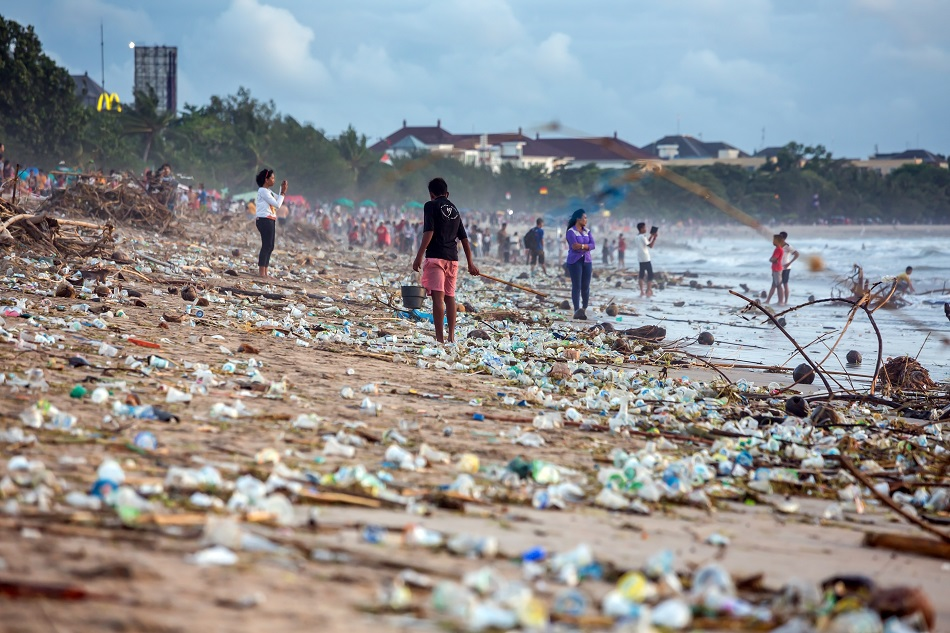
Image Credit: Maxim Blinkov/Shutterstock.com
Plastic pollution has dramatically hit the headlines over the past few years, as we discover how much plastic has invaded our natural resources and ecosystems. It is no surprise then that there are adverse effects on human health, alongside the environmental impacts, due to the often toxic component chemicals.
A comprehensive 2019 study performed by the Center for International Environment Law - and other institutions - has shown the many and potentially devastating effects that plastic poses to our health.
We come into contact with plastic in all stages of its lifecycle: from the extraction of raw materials to the manufacture of plastics, through to consumer usage, and finally their disposal. The chemicals and gases produced at these varying stages can be inhaled, ingested, or come directly into contact with our skin.
Substances such as POPs, Benzyne, and VOCs are present, which are all proven to adversely affect human health. Even products marked as “safe” by food agencies have recently failed rigorous testing - a notable example is a lower-grade silicone that can produce toxic chemicals at the high heats that products may encounter in a kitchen, for example.
How Does it Enter Our Systems?
The extraction of resources for plastics often involves fracking or other invasive processes, and many release a significant amount of harmful substances into the atmosphere or pollute the surrounding environment. At the other end of the plastic cycle, waste management technologies such as incineration, gasification, and pyrolysis also release toxic metals such as lead, mercury and acid gases into the surrounding air, soils, and waters.
In its physical form, most of the plastics which are harmful to us are almost invisible to the naked eye. Micro and nano-plastics are being found in a significant proportion of test sites, such as in sea salt, rainwater, and even mountaintops - as the plastics evaporate and fall as precipitation with the water molecules.
These tiny particles enter the terrestrial and aquatic biospheres and are often ingested by animal life, ultimately bioaccumulating through trophic levels and posing a threat to humans who consume seafood. It can take up to 1000 years for some plastics to degrade: meaning that there is an almost constantly-changing surface area of new chemicals leaching from the core of each micro-plastic particle. It is therefore wholly likely that humankind will be dealing with the health and other issues produced by plastic pollution for centuries to come.
Health Risks
This and several other studies have found causal links between plastic and problems across most of the human body's systems: for instance cardiovascular, respiratory, reproductive, and gastrointestinal systems. Therefore, the health impacts are overwhelmingly numerous. Cancer, diabetes, chronic inflammation, and various immune diseases are just a few examples of severe issues potentially caused by plastic and its toxic components.
Heavy substances released in the extraction and waste incarceration processes have been strongly linked to problems in more vulnerable populations, such as children and pregnant women. Drilling and fracking operations produce chemicals which are known endocrine disruptors, which has hugely adverse effects on the developmental, immune, neurological, and reproductive systems. For pregnant women, such impacts on a developing fetus have been shown to increase the likelihood of birth defects of the brain, heart, and/or spine.
This study highlights that “uncertainties and knowledge gaps undermine the full evaluation of both acute and long-term health risks at all stages of the plastic lifecycle”. What is presented by these institutions - and by others of their kind - is an urgent need to perform further research on the potential health risks of plastic pollution, whilst drastically limiting its production and usage in the meantime.
Another important step in the process is educating the public on these issues, so that they may make fully-informed lifestyle decisions going forward, and limit their exposure to these pervasive, harmful substances.
References and Further Reading
Disclaimer: The views expressed here are those of the author expressed in their private capacity and do not necessarily represent the views of AZoM.com Limited T/A AZoNetwork the owner and operator of this website. This disclaimer forms part of the Terms and conditions of use of this website.